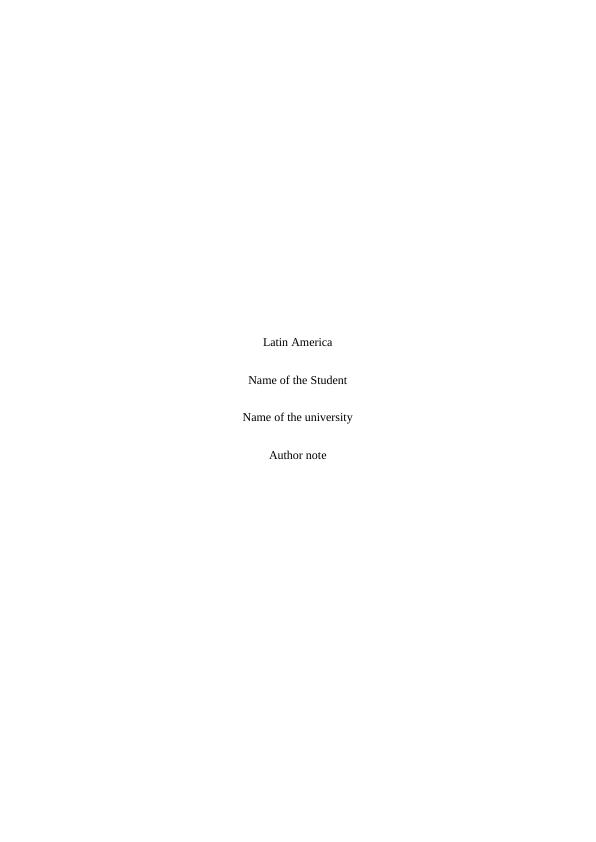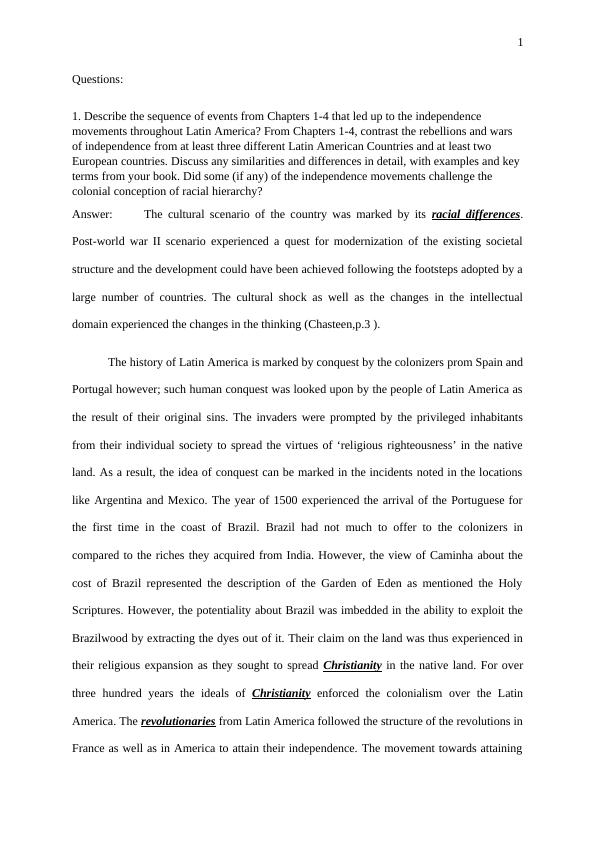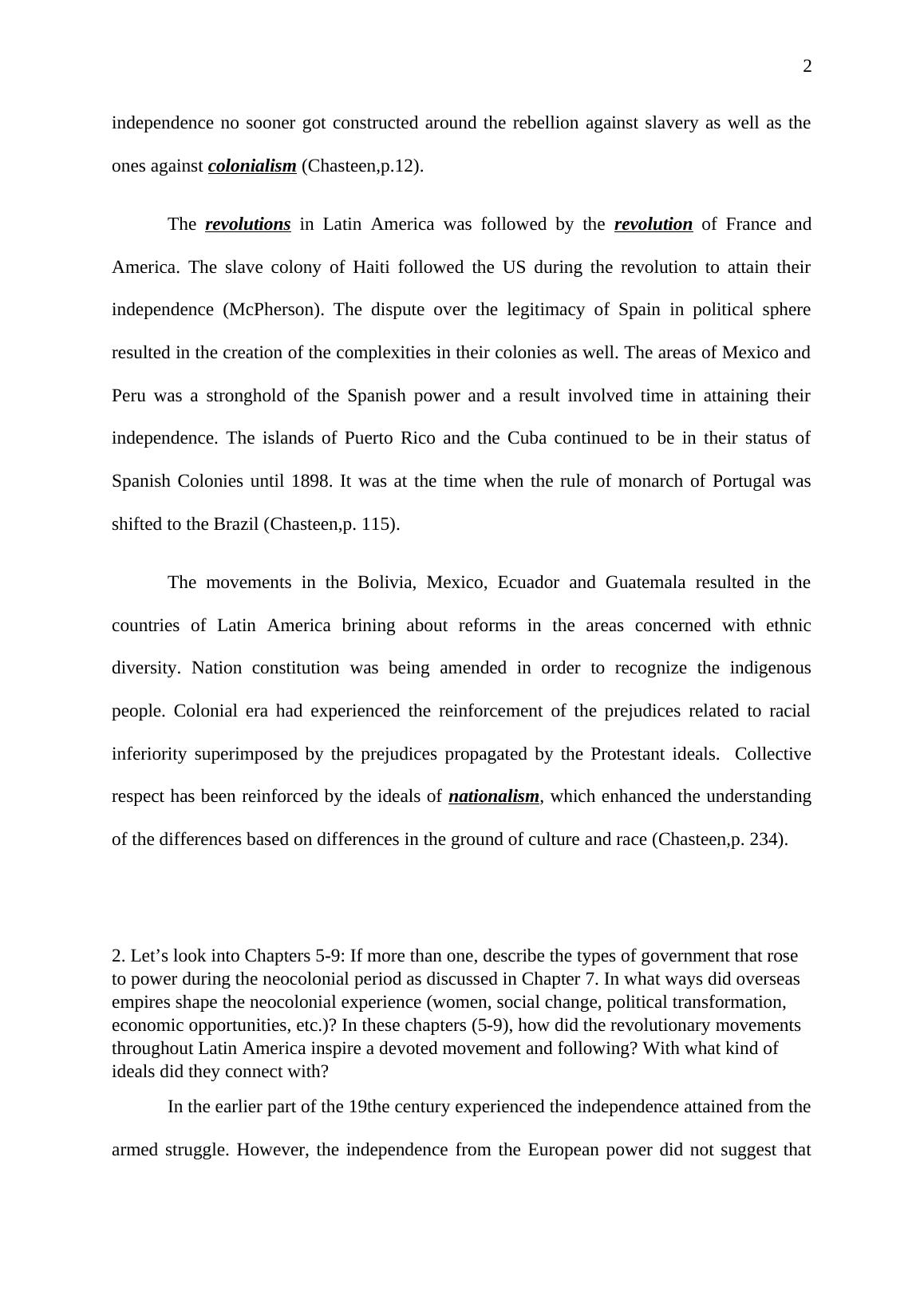History of Latin America | Assignment
Answering questions about the sequence of events leading to independence movements in Latin America and the impact of neocolonialism on government, society, and revolutionary movements.
6 Pages1369 Words15 Views
Added on 2022-08-20
History of Latin America | Assignment
Answering questions about the sequence of events leading to independence movements in Latin America and the impact of neocolonialism on government, society, and revolutionary movements.
Added on 2022-08-20
ShareRelated Documents
End of preview
Want to access all the pages? Upload your documents or become a member.
History of Latin America and Its Overview
|5
|833
|9
History Homework - Latin America and Mexican Revolution
|8
|1101
|377
The Impact of European Colonization on Native American Civilization
|8
|1868
|63
AMERICAN HISTORY 4 AMERICAN HISTORY Authors note: Answer 1- Columbus embarked into the New World
|6
|1488
|342



